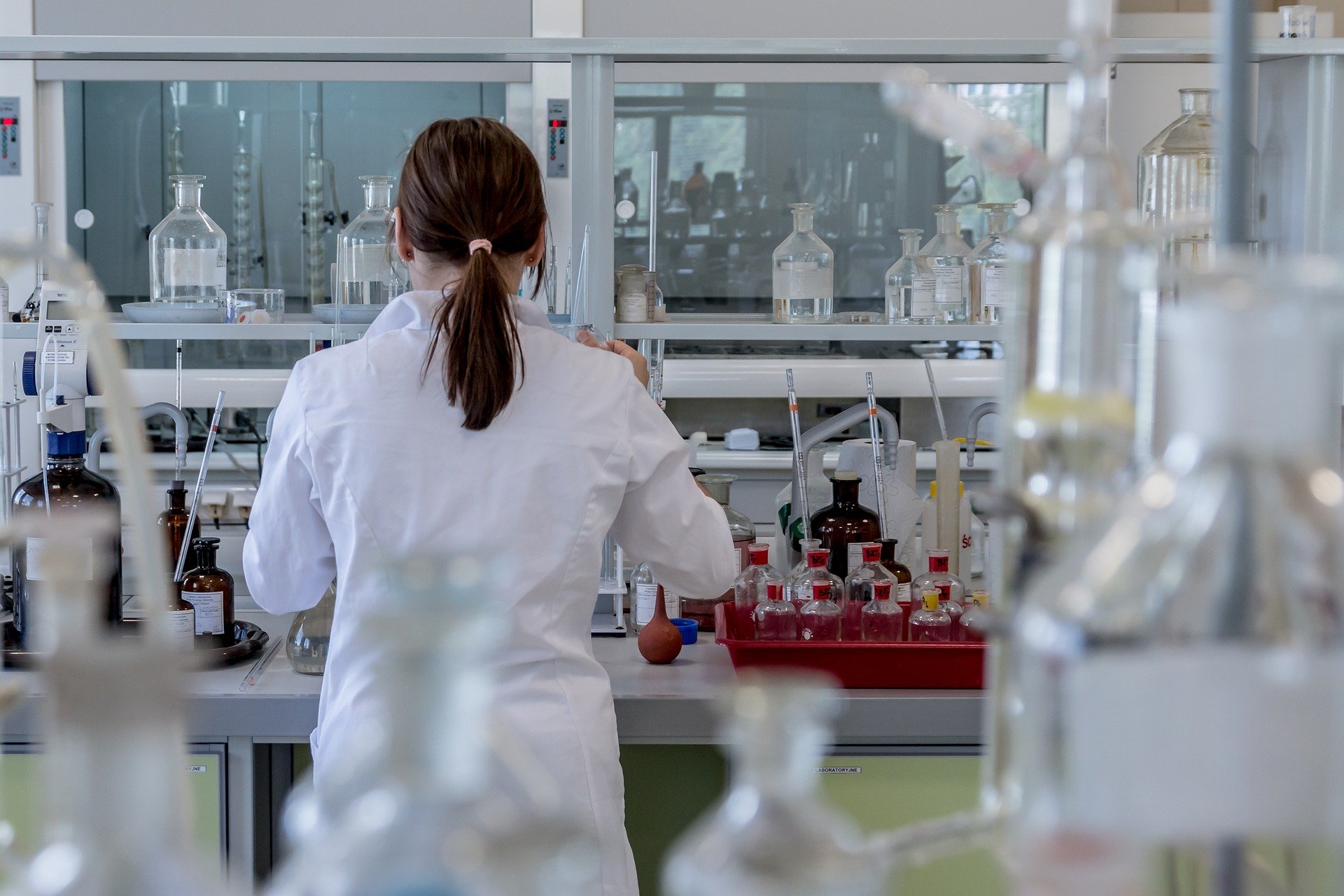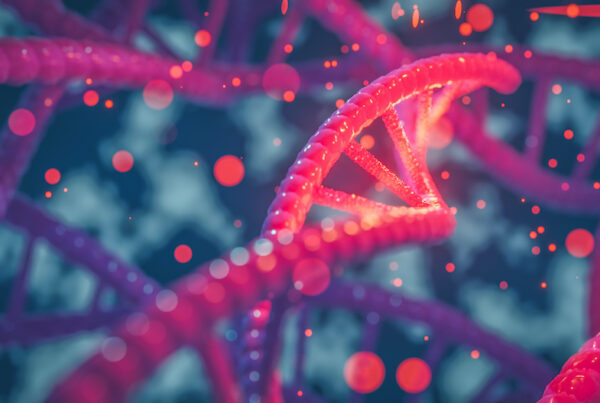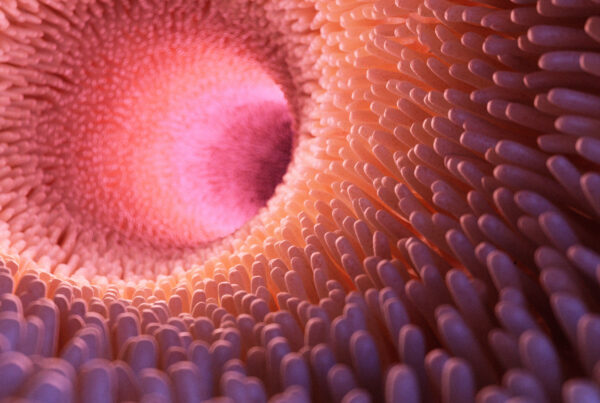What is BPC 157?
BPC 157 (body-protecting compound) is a synthetic peptide modeled after a naturally occurring protein found in the stomach (specifically the gastric fluid).
Peptide chains can consist of anywhere from two to fifteen or more blocks of amino acids. By studying the role that peptides, amino acids, and proteins play in keeping the body moving and working in optimal shape, scientists have been able to come up with the vitamins and supplements that have been on the market for years, as well as new and synthetic versions of the natural compounds that are found in the body.
In a perfect system, the body would continually produce everything that it needs to optimally function and recover from injuries and fight off the aging process. But just like with collagen and nutritional vitamins and mineral supplements, sometimes the body needs an outside boost to continue performing at optimal levels after an injury, or just to compensate for the natural toll that the aging process takes on the body.
Of course — while that might tell you what BPC 157 is in a rough sense, you probably have a lot more questions. We’ll do our best to answer them.
 Amino Acids and Peptides: Discussing What Powers the Body
Amino Acids and Peptides: Discussing What Powers the Body
The human body is often compared to a complex and highly sophisticated machine. We know that we need a strong, healthy heart and lungs to breathe and live an active life and that the liver and kidneys are critical to filter toxins out of the body. Muscle strength and joint health are also vital for an active, healthy lifestyle and to lower the risk of injuries and chronic pain as we age.
Like any high functioning machine, the human body essentially comes down to an intricate network of chemical reactions that play a role in everything from digesting the food you eat, how quickly you heal from a cut or wound, how soft your skin feels, and even how quickly your hair and nails grow back after you cut them.
If you’re like 75% of the adults in the U.S., you’ve probably taken a supplement at some point to boost your energy before a workout, to give your immune system an extra boost during flu season, to manage your anxiety, or to help you sleep better. Or maybe you’re one of the 50 million Americans with an allergy to ragweed or cats, and keep a supply of Benadryl in your medicine cabinet for the next time an allergic reaction hits.
You probably don’t give much thought to the protein powder you add to your smoothie every morning or the antihistamine pill you take when you’re exposed to too much pollen or pet dander, but what they all have in common is that they mimic an important function performed in your body by amino acids and proteins.
Known as the building blocks of proteins, amino acids are a series of chemical compounds in the body that produce everything from hormones to the chemical signals that power the central nervous system (neurotransmitters). If the central nervous system were an engine that runs on electricity, amino acids are like the currents that keep the system humming along and running smoothly.
Peptides: Small Bonds with Big Responsibilities
Powering the human body is a massive undertaking and in order to synthesize the complicated processes that keep the mind and body functioning, amino acids group together to form a string of molecules known as peptides.
Like most consumers, you may be familiar with peptides as an ingredient in anti-aging products like face creams and moisturizers in the form of collagen. As we age, natural collagen and elastin production begins to slow down, resulting in the familiar signs of aging: fine lines, wrinkles, and sagging skin.
But peptides are responsible for much more than fighting crow’s feet, frown lines, and wrinkles. Like proteins and amino acids, there are different types of peptides that are responsible for a broad range of metabolic functions, like regulating blood sugar (insulin) to building and repairing muscle tissue.
Thanks to decades of research and modern technology, scientists and health professionals have been able to gain more insight in recent years into how we age, and how to replicate the processes that the body uses to heal itself in order to come up with more treatment options for everything from sagging skin to torn ligaments and arthritis.
 Growth Factors, Body Protection Compound, and Athletes
Growth Factors, Body Protection Compound, and Athletes
If you run marathons, play tennis or basketball, like to cycle on the weekends, or are just generally physically fit and active, you already know the toll that a tendon or ligament tear can take on your body and training schedule
Whether you’ve had to drop out of a race to deal with a knee injury or hang up your tennis racket to recover from an injured rotator cuff, you know that joint problems and soft tissue injuries can take you from peak fitness one day to limping and struggling with stiffness, pain, and inactivity the next.
When you suffer a soft tissue injury like a ruptured tendon or joint damage from an injury or condition like osteoarthritis, the body initiates a healing response that involves a number of processes including the release of growth factors, proteins that help with tissue healing and cell differentiation among other things.
If you follow professional sports, chances are that one of your favorite athletes has supplemented their healing and recovery with a treatment designed to replicate and enhance the body’s natural healing mechanisms. Some of the biggest names in sports, including Tiger Woods, Rafael Nadal, Kobe Bryant, and Peyton Manning have tried supplemental regenerative medicine treatments to boost their treatment for problematic injuries.
Scientists and medical researchers are constantly looking for ways to replicate and turbo-charge naturally occurring healing and restorative elements and proteins in the body like growth factor and body-protecting compound. Products like BPC 157, which have shown promise for potential applications to common soft tissue injuries like tendon issues and inflammation, are inspired by cellular biology.
According to the results of a study on the effects of BPC 157 on tendon healing and cell survival published in the Journal of Applied Physiology:
“Body protection compound (BPC, mol wt 40,000) was first discovered and isolated in gastric juice and later a stable 15-amino acid fragment (Gly Glu Pro Pro Pro Gly Lys Pro Ala Asp Asp Ala Gly Leu Val, mol wt 1,419, called BPC 157) with apparently no sequence homology to other known peptides, was found to be essential for BPC’s activity (8a). Although the detailed mechanism is poorly understood, BPC 157 appears to be beneficial to almost all organ systems in many species when very low dosages (mostly ng/kg to μg/kg range) after intraperitoneal, intragastric, and intramucosal (local) application are used.
The effect is usually apparent already after one application, while long-lasting activity has also been demonstrated. Except the effects on various gastrointestinal lesions, the healing-promoting effects of BPC 157 have also been reported on pancreas, liver injuries, endothelium, heart damage, and pseudoarthrosis (23). The effect of BPC 157 is particularly prominent when applied simultaneously with noxious agents or in already pathological conditions.
Previous studies have also proven that there is no side effect or toxicity found in BPC 157 usage; therefore it could be a useful new class of drugs for organ protection. Gastric pentadecapeptide BPC 157 is a very stable water-soluble peptide that is resistant in human gastric acid for at least 24 h. In the literature, it exhibits both antiulcer and anti-inflammatory effects. Like other growth factors (such as TGF-β1 and EGF), it can improve the healing of injured tendon in animal experiments. It is therefore suitable for local or systemic usage.”
Despite its gastric properties, BPC 157 experiments have found that it may potentially contribute to improved healing in soft tissue injuries like the Achilles tendon.
How BPC 157 Can be Used
According to research published by the U.S. National Library of Medicine, National Institutes of Health, BPC 157 is showing promise in areas like wound healing for chemical burns and tendon healing. But it doesn’t stop there. According to the study from the Journal of Applied Physiology, BPC 157’s wound healing potential is also being investigated for a number of areas including:
- Gastric ulcers
- Skin
- Muscle
- Colon
- Cornea
- Bone defects
- Colocutaneous fistula
For busy and active adults, the potential for BPC 157 to aid in tendon healing and repair is especially promising due to how common soft tissue injuries are. According to the National Institutes of Health, over 30 million musculoskeletal injuries are reported every year. Of those, at least half involves a tendon or ligament injury. In fact, the Achilles tendon is one of the most injured tendons in the body. This presents a dilemma for active and health-conscious individuals.
You may do everything right such as get regular exercise by playing a sport or participating in a physical activity that you love, but an overuse injury (one of the most common culprits of soft tissue injuries) or the aging process itself can get in the way and prevent you from being as active as you’d like to be. But as you know, the less active you are, the harder it is to get back in shape and the more prone you are to future injuries and problems like chronic pain.
And to make matters worse, in some cases injuring a muscle or tendon once actually increases your risk of suffering additional injuries in the future, even if it heals and you do everything “right.”
The goal of peptide therapy and similar treatments is to use science and technology to replicate the body’s healing and performance mechanisms. On a basic level, peptides are already common in supplement form from a number of familiar plant and animal sources including:
- Dairy (eggs, milk)
- Legumes (beans and lentils)
- Meat and fish
- Soy
- Wheat and oats
- Flaxseed
As a synthetic peptide, BPC 157 is formulated in a lab and needs to be administered as a supplement.
With its potential applications for helping with wound healing and fighting inflammation, BPC 157 could be an obvious choice for active, highly functioning adults looking to stay strong and in peak physical shape, especially after an injury. More information is needed to really understand the potential available in peptide therapies like BPC 157, but they may prove to be another tool for health and wellness-minded individuals looking to feel and perform at their very best levels, at any age.
 Is BPC 157 Safe?
Is BPC 157 Safe?
As with traditional medicine, there is no such thing as a silver bullet or guaranteed treatment or remedy for certain injuries and illnesses or a “cure” for the aging process itself. Even treatments and products that have been around for centuries can’t guarantee results or work in the same way for everyone. The possible benefits and side effects of BPC 157 as a supplement are still being studied, but as a gastric protein BPC 157 has so far been found to have minimal side effects or toxicity.
A study that looked into how BPC 157 could be used to counteract toxicity from NSAIDs (non-steroidal anti-inflammatory drugs) like over the counter painkillers published in Current Pharmaceutical Design journal found the following:
“Stable gastric pentadecapeptide BPC 157 is an anti-ulcer peptidergic agent, proven in clinical trials to be both safe in inflammatory bowel disease (PL-10, PLD-116, PL 14736) and wound healing, stable in human gastric juice, with no toxicity being reported. Recently, we claim that BPC 157 may be used as an antidote against NSAIDs. We focused on BPC 157 beneficial effects on stomach, duodenum, intestine, liver and brain injuries, adjuvant arthritis, pain, hyper/hypothermia, obstructive thrombus formation and thrombolysis, blood vessel function, counteraction of prolonged bleeding and thrombocytopenia after application of various anticoagulants and antiplatelet agents and wound healing improvement.”
At the moment, study results have been derived from animal experiments. BPC 157 is not meant to replace medical treatment or any prescribed medications you may be taking, but rather as a tool to help optimize and enhance your health and wellness.
For more information about peptide therapy, please contact us today to learn more.
As with any treatment, the results and potential side effects of peptide therapy will vary from person to person. Peptide therapy is not intended as a replacement or alternative to medical treatment or a healthy diet and active lifestyle, which is the cornerstone of lasting health, wellbeing, and longevity. For high functioning and athletic individuals, peptide therapy may provide an added boost to traditional therapies and treatment programs.


 Amino Acids and Peptides: Discussing What Powers the Body
Amino Acids and Peptides: Discussing What Powers the Body Growth Factors, Body Protection Compound, and Athletes
Growth Factors, Body Protection Compound, and Athletes Is BPC 157 Safe?
Is BPC 157 Safe?

